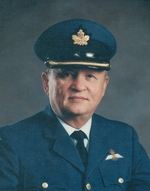George Wallace
Army.ca Dinosaur
- Reaction score
- 223
- Points
- 710
This off the Hussar Net:
Friday, June 15, 2012
Good morningIt is with sadness that I have been informed of the passing of LCOL(R) Ed Exley
LCOL Exley passed away late Tuesday evening without pain or suffering. An informal reception to help celebrate his life will be held at the National Cemetary of Canada, located at 280 Beechwood Avenue, Ottawa, Ontario on Wednesday, July 20 between the hours of 2 and 4 PM. An official obituary will be posted in the Saturday Citizen with all the details but please help us to spread the word to all friends and acquaintances. Message received from Bryan Exley. Our deepest condolences go out to LCOL Ed Exley family
Good afternoon
Please note change in date for the informal reception. The family had passed on the wrong date. The correct date is Wednesday, 20 June, 2012 between the hours of 2 and 4 PM. The family regrets any confusion.
Association members, It is with regret we announce the passing of LCOL(R) Ed Exley.
Our deepest sympathies go out to his family at this time. Info below.
Additional subjects: Col Claggett, I would like to make a correction that I had in the last Sabretache. I referred to Col Claggett as Mr WL Claggett and It should have read as Col Claggett. My apologies.
Lest We Forget
I have added an additional subject to the Web page under the museum tab called "Lest We Forget.)
"Lest We Forget"
For the past few years Belleisle Regional High School teacher, Stephen Wilson, has provided his history students with an opportunity to research and build a documentary video on the life and military history of a number of members of the Canadian Forces within the local community who have paid the supreme sacrifice during a conflict. This project received acclaim in the Legion Magazine in November 2010. With the kind permission of the school, teachers and students, we are pleased to present an overview of their efforts to document and bring to light the efforts of these veterans who gave everything to support the freedom we know today! The Link will take you to the video's. They are amazing.
http://www.8chassociation.com/Lest%20We%20Forget.htm
Shirley LaMontagne
8 CH Association Secretary
[email protected]
Telephone | Téléphone 506-422-2210
Cell (506) 471-7988






